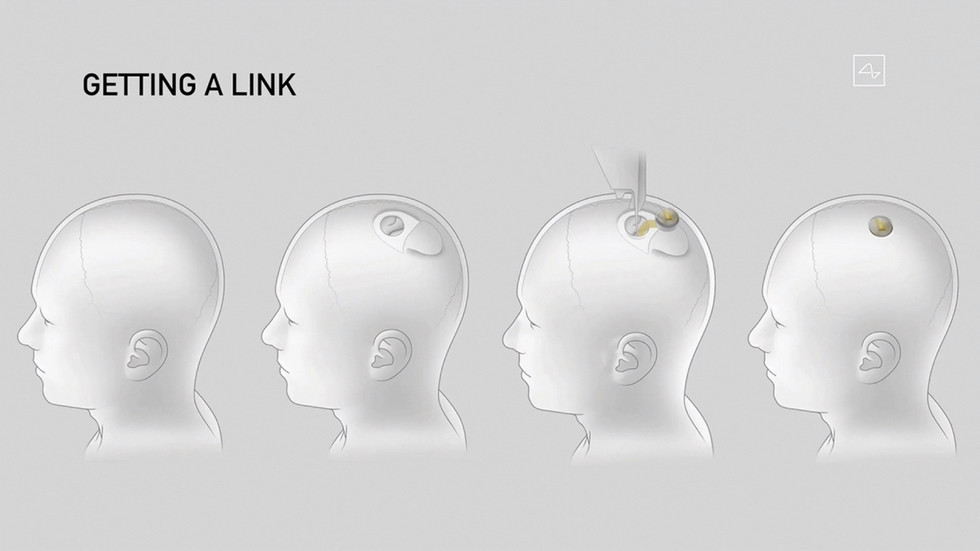
Neuralink d'Elon Musk a fait une percée dans la technologie de contrôle mental, qui est soit brillante, soit terrifiante, selon votre point de vue. La société de neurotechnologie a publié sur son blog une séquence vidéo d'un singe jouant au jeu vidéo "Pong", utilisant uniquement son esprit pour contrôler le jeu via un implant Neuralink dans son cerveau.
Pour commencer, le singe, nommé Pager, a reçu un joystick et a joué à un jeu où il déplaçait des jetons sur l'écran à l'aide du joystick (assez impressionnant en soi si vous nous demandez). Neuralink a réussi à faire correspondre les signaux cérébraux du singe à ses mouvements et a commencé à anticiper les mouvements que Pager ferait ensuite, en retirant finalement complètement le joystick.
Ce n'est pas la première fois que Neuralink teste cette technologie. L'année dernière, Musk a démontré son utilisation avec l'aide d'un porc volontaire, mais cette nouvelle démonstration va encore plus loin et nous donne un aperçu de ce que l'entreprise espère pouvoir réaliser en termes d'implants humains.
Comme indiqué sur son blog, l'objectif ultime de Neuralink est de permettre aux « personnes atteintes de paralysie d'utiliser directement leur activité neuronale pour faire fonctionner des ordinateurs et des appareils mobiles avec rapidité et facilité ». En cas de succès, cela pourrait potentiellement changer la donne pour la technologie médicale.
Est-ce une percée pour la science, ou une preuve supplémentaire que Musk construit une armée de singes de haute technologie ? Seul le temps nous le dira.
Elon Musk's Neuralink has had a breakthrough in mind-control technology, which is either brilliant or terrifying, depending on your point of view. The neurotechnology company has released video footage on their blog of a monkey playing the videogame 'Pong', using only its mind to control the game via a Neuralink implant in its brain.
To start, the monkey, named Pager, was given a joystick and played a game where it moved tokens around the screen using the joystick (pretty impressive on its own if you ask us). Neuralink was able to match the monkey's brain signals to its movement and began anticipating which moves Pager would make next, eventually removing the joystick altogether.
This isn’t the first time Neuralink has trialed this technology. Last year, Musk demonstrated its use with the help of a pig volunteer, but this new demonstration goes one step further and gives us a glimpse of what the company hopes to be able to achieve in terms of human implants.
As outlined on its blog, Neuralink's ultimate aim is to allow ‘people with paralysis to directly use their neural activity to operate computers and mobile devices with speed and ease.’ If successful, this could potentially be a game-changer for medical technology.
Is this a breakthrough for science, or further proof that Musk is building a hi-tech monkey army? Only time will tell.

Startup
A startup or start-up is a company or project undertaken by an entrepreneur to seek, develop, and validate a scalable business model. While entrepreneurship refers to all new businesses, including self-employment and businesses that never intend to become registered, startups refer to new businesses that intend to grow large beyond the solo founder. At the beginning, startups face high uncertainty and have high rates of failure, but a minority of them do go on to be successful and influential. Some startups become unicorns; that is privately held startup companies valued at over US$1 billion.
Actions
Startups typically begin by a founder (solo-founder) or co-founders who have a way to solve a problem. The founder of a startup will begin market validation by problem interview, solution interview, and building a minimum viable product (MVP), i.e. a prototype, to develop and validate their business models. The startup process can take a long period of time (by some estimates, three years or longer), and hence sustaining effort is required. Over the long term, sustaining effort is especially challenging because of the high failure rates and uncertain outcomes. Having a business plan in place outlines what to do and how to plan and achieve an idea in the future. Typically, these plans outline the first 3 to 5 years of your business strategy.
Design principles
Models behind startups presenting as ventures are usually associated with design science. Design science uses design principles considered to be a coherent set of normative ideas and propositions to design and construct the company's backbone. For example, one of the initial design principles is "affordable loss".
- Log in to post comments